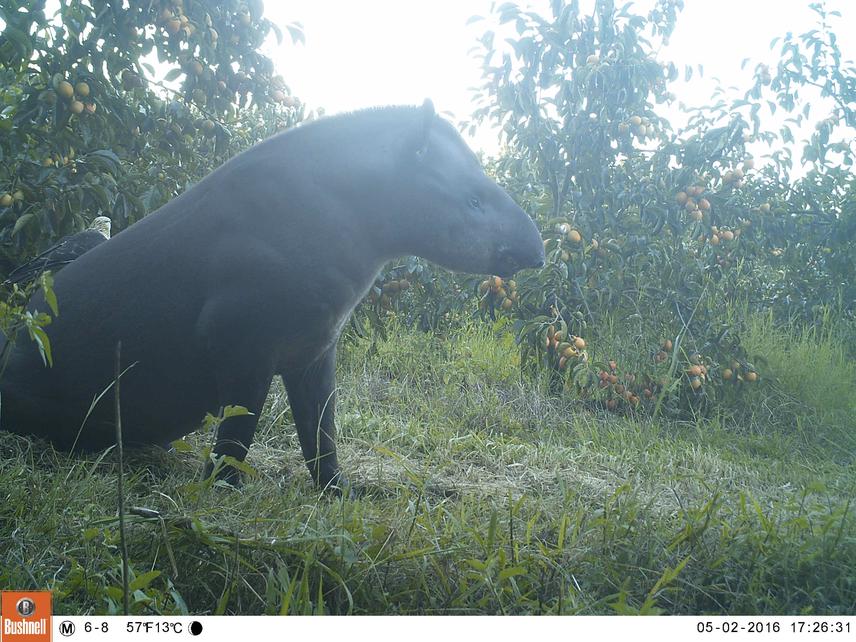Pietro de Oliveira Scarascia
This project came from the gap in the knowledge about the use of different mosaics habitat by mammals, which can provide management actions, generating implications for the conservation of the species.

Lowland tapir in persimmon.
Agricultural landscapes are mosaics of the most common habitats on the planet. In these anthropogenic environments, matrix plays a key role in the biological communities dynamics, since many species use the entire landscape. Knowledge about the use of different mosaics habitat has implications for the species conservation and would aid in the improvement of management actions. However, there are few studies that evaluate the use of agricultural areas by medium and large mammals: animals that play an important role in ecological processes involved in forest dynamics and can suffer from inadequate management of the agricultural areas. In Elguero Farm many mammals, including endangered species such as Spotted Paca (Cuniculus paca), the Small Red Brocket (Mazama bororo), Puma (Puma concolor), Giant Anteater (Myrmecophaga tridactyla) and Lowland Tapir (Tapirus terrestris), are observed in areas of forestry and fruit production. Thus, there is a need to evaluate the mammal community regarding the use of these areas, so that information allows the development of better management strategies.
These strategies enabling the use of practices that minimize the impacts on biodiversity and serving as a model for sustainable use of resources in Farms with agricultural production close to the native forests and protected areas. The study area is within the Buffer Zone of the Carlos Botelho State Park, adjacent to the largest contiguous country's Atlantic Forest: Paranapiacaba Ecological Continuum; which shelter important representatives of the native mammals of the biome. With the data collected in this study, the flow of individuals between different habitats and the permeability of the matrix (persimmon, plum and pine resin productions) will be evaluated. Thus, the matrices considered permeable may be deployed in areas where there is need for passageway, allowing the flow of animals. Knowledge of the degree of flexibility of species is essential to determine the vulnerability of them, as species with more rigid requirements are at risk of becoming locally extinct. Thus, the threats that these disturbed areas may offer to the species can be identified. The information obtained should provide major guidelines, ensuring the security of specimens, adequacy of management in the areas of production and the long-term conservation of mammals. Additionally, the Elguero Farm shelter umbrella species, whose conservation will benefit other species that share this same mosaic habitat.